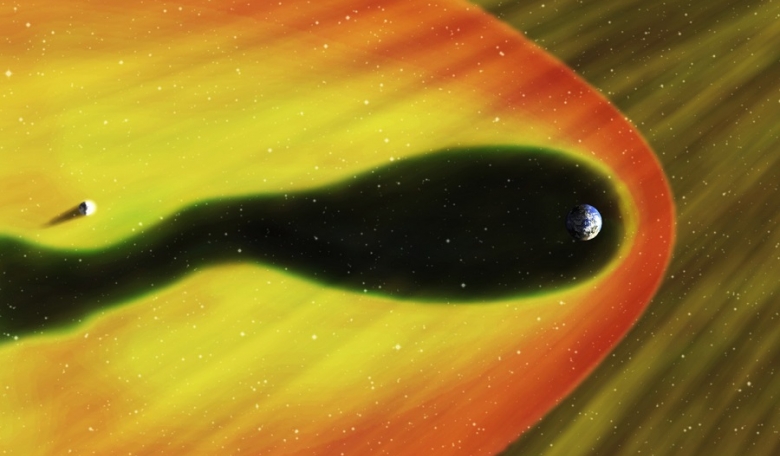Which way the wind blows in space has taken on a new importance for astronaut safety at the Moon. Using data from several NASA missions, scientists have discovered that wind created by high-speed particles from the Sun can cause the tail of Earth’s protective magnetic bubble to flap like a windsock in a strong breeze.
This unexpected movement can pull the tail so far out of line that it exposes the Moon to potentially damaging charged particles at times it was previously thought to be protected. The finding, which reveals a new challenge of predicting when solar activity exposes the Moon, will help scientists and engineers prepare for the safe operation of future human lunar missions.
As well as providing life-giving light, the Sun also spews out high-speed particles – the solar wind, in which some very high energy particle bursts can be damaging to satellites and humans in space.
While Earth is safe inside its magnetic bubble - the magnetosphere - the Moon continually passes into and out of the stretched-out tail of this protective bubble as it orbits the planet.
During the time the Moon spends behind Earth – in the full Moon phase – it is inside the magnetosphere and thought to be protected but this new research, published in the Journal of Geophysical Research: Space Physics, shows that’s not always the case.
Scientists have previously shown that even at distances 800,000 miles from Earth the solar wind can cause the tail of the magnetosphere to flap around. Now the new research found this also happens at just one-third that distance, where the Moon orbits.
At times of high solar activity, the Sun can release extra bursts of material in the solar wind – shock waves that ripple across the solar system. When these shock waves reach Earth, they have enough pressure to change the shape of the magnetosphere, which is already stretched into a windsock-like shape due to the pressure from solar wind particles.
If the wind after the shock wave is strong enough, it can cause enough movement to expose the Moon to the solar wind, even when it’s directly behind Earth.
The new discovery used several NASA spacecraft to monitor the effects of one high-speed shock wave that barrelled towards Earth, travelling at 1.7 million miles per hour.
The shock was first measured by the Advanced Composition Explorer, Cluster and Wind missions, which are all situated between Earth and the Sun. An hour later at the Moon, changes to the magnetic environment were seen by THEMIS-ARTEMIS, a separate mission from NASA’s new Artemis programme, using two satellites to study the lunar space environment.
The data from the missions showed that the strong wind behind the shock wave pushed aside the magnetosphere’s long trailing tail, causing it to wave back and forth like a windsock. The side-to-side movement was so large that it repeatedly exposed the Moon to the solar wind over a 30 minute period.
The research demonstrates the lunar exposure could happen even without a shockwave – such as at times when the solar wind blows sideways – suggesting the exposure could occur even more commonly than previously thought.
As NASA’s Artemis programme prepares to send new science and technology experiments ahead of a human return, it is essential to understand the area’s particle radiation environment, which can potentially damage electronics and humans during storm events.











